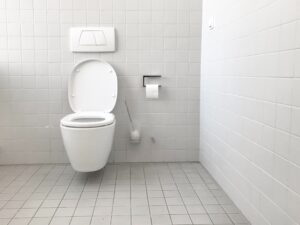
Benign protastic hyperplasia (also called BPH, or referred to as prostate enlargement)requires BPH treatment. But, when you're seeking relief, there are several different treatment options which you can choose from. So, today, we're explaining our Georgia Prostate Institute's specialists are explaining each of your options, and highlighting how interventional radiology can provide effective relief.
What is BPH?
With this condition, you experience enlargement of the prostate gland due to non-cancerous causes. (This walnut-shaped gland produces the fluid for semen, making it an important part of the male reproductive system). Still, because the prostate surrounds the urethra and bladder, any enlargement can lead to lower urinary tract symptoms, or LUTS.
BPH Symptoms
What are the two most common symptoms of BPH? Many men complain of losing the ability to urinate or of having difficulties completely emptying their bladders, with the end of urinary flow slowing to a dribble. Other LUTS symptoms include:
- Incontinence
- Blood in the urine
- Pain with urination
- Delayed onset of urination
- Urinary urgency, without prior warning
Seeking BPH treatment
When you're choosing between BPH treatment options, you should be guided by symptom severity. Some men can simply observe their symptoms for any changes, making sure your condition isn't getting worse. At the same time, you can incorporate lifestyle changes to reduce your symptom impact. Try urinating as soon as you feel the need. Schedule regular bathroom trips, even when you don't feel the need, and avoid caffeinated or alcoholic beverages, especially at night.
On that note: drinking at night is something to think about as well. You should stop all all fluid consumption at least two hours before you plan to go to sleep. Instead, try sipping small volumes of fluid all day long, instead of guzzling beverages all in one go.
With BPH, regular exercise can also help improve your symptoms by managing stress and reducing tension. But you should also carefully discuss over-the-counter medication use with your doctor, since decongestants and antihistamines can worsen LUTS symptoms.
Medications for BPH
When symptoms become more intrusive, you may turn to BPH medications. Both finasteride and dutasteride lower hormone production in the prostate, in turn reducing its size. (However, these medications take at least three months to deliver noticeable symptom relief.)
Another option is to try Alpha-1 blockers; these blood-pressure medications relax the neck of the bladder, along with the prostate, making it easier to urinate. But, like all medications, these options for BPH treatment can interact with other prescriptions and cause unwanted side effects . As such, you may want to explore other pathways to relief.
Non-Surgical BPH Treatment
One non-surgical treatment option is aquablation, which uses ultrasound guidance to place a water jet that can destroy excess prostate tissue. Often recommended for men who have difficulties emptying their bladder and therefore retain urine, this procedure does require you to stay overnight in the hospital.
Wanting to avoid overnight hospital stays? The FDA approves Prostate Artery Embolization, or PAE, for effective BPH treatment. We perform this outpatient procedure at our Georgia Prostate Institute to relieve LUTS and other effects of prostate enlargement. Now, not every patient can benefit from this treatment option, but you be a PAE candidate if you've failed to find BPH symptom relief with medications, prefer to avoid surgery, and aren't a good candidate for invasive procedures.
Ready to find LUTS relief? When medications and lifestyle interventions fail, we can provide non-surgical relief. Contact our Georgia specialists today to discuss treating BPH with PAE.
While many treatments for benign prostatic hyperplasia (BPH) can cause sexual side effects, there are ways to shrink your enlarged prostate while minimizing the impact on your sex life. If you choose to undergo a surgery such as TURP (Transurethral Resection of the Prostate), you are at high risk for ejaculatory dysfunction following your procedure. However, you can treat BPH without sexual side effects with a minimally invasive procedure such as Prostatic Artery Embolization (PAE).

When to Treat an Enlarged Prostate
After turning 50, prostate enlargement is a common concern for most men. Even when the cause of enlargement is benign, you may choose to seek treatment when BPH symptoms such as nocturia or urgency begin to interfere with your daily life.
Initially, you may explore lifestyle adjustments or medications that can help manage an enlarged prostate. But when these options fail to provide sufficient relief, additional interventions may be necessary. And, at this point, you will have to ask: can I treat BPH without sexual side effects? Luckily, the answer is yes, you can!
Sexual Side Effects and Treatment for an Enlarged Prostate
For years, the TURP procedure was the gold-standard BPH treatment for men who could not find relief from medications such as Cialis for BPH or from lifestyle adjustments. However, that was a big problem, as this study reveals that the procedure causes retrograde ejaculation (semen flows back into the bladder instead of out of the urethra) in about 66% of patients. Naturally, this causes hesitation for many men.
Today, there are options such as PAE treatment that can address BPH while reducing your risk for sexual side effects. The procedure still shrinks your enlarged prostate, but it does so in a minimally-invasive manner, using small punctures wounds and guided cathethers to reduce blood flow to your gland. As such, this study reports that ejaculatory dysfunction impacts just 10% of men who undergo PAE. Moreover, the patients who experienced sexual side effects also experienced greater difficulty emptying the bladder (called post-void residual volume) before seeking treatment.
Now, not every patient is a candidate for PAE. But if you want to treat BPH without sexual side effects, it's worth learning more about this procedure. You can start your journey by requesting a consultation at one of our three convenient Georgia Prostate Institute locations.
Do you wake up at night with an urgent need to urinate? We understand how frustrating it is to have constant interruptions and discomfort from benign prostatic hyperplasia (BPH).
We are here to help you find relief and reclaim your peace. With our deep expertise in managing BPH symptoms, we offer solutions that truly work, such as Cialis for BPH.
Cialis is an oral medication that helps relax the muscles and increase blood flow to the penis, prostate, and bladder, allowing urine to flow more freely.
Next, we explore Cialis treatment for BPH, its impact on urinary and sexual health, and potential side effects.
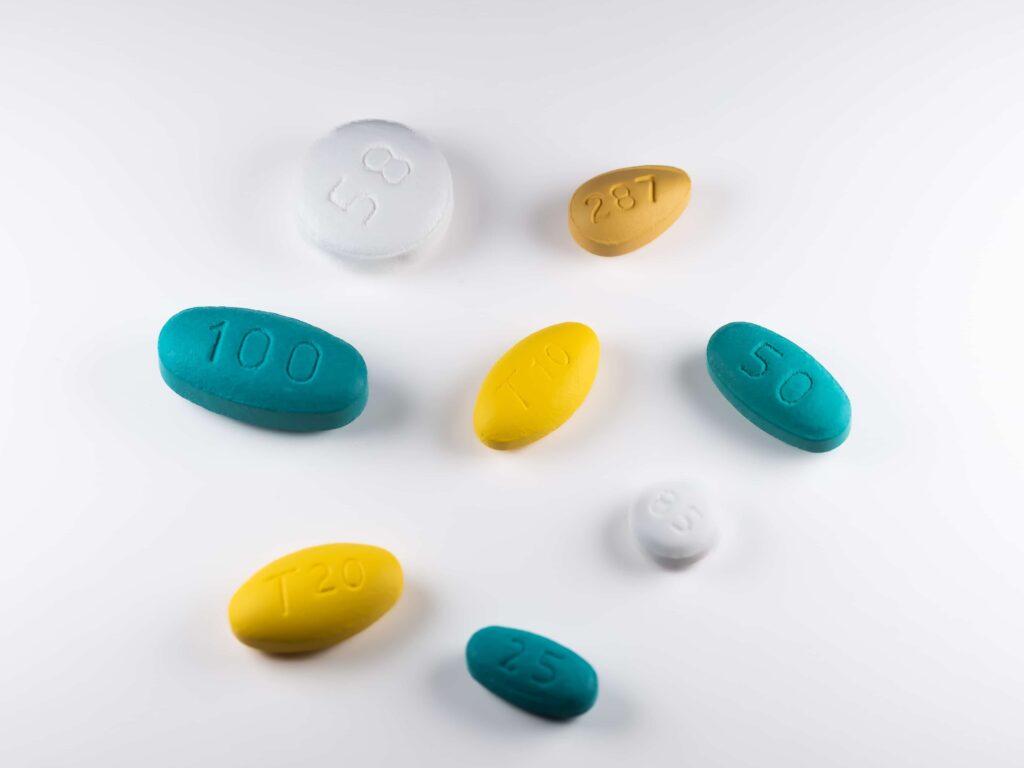
Understanding BPH
BPH is characterized by an enlarged prostate, which can range in severity. It is usually caused by natural aging and hormonal changes, but other BPH causes include cell growth, inflammation, and lifestyle or neurological factors.
Some men experience mild BPH symptoms that are easily managed with lifestyle changes, such as:
- Modifying your diet.
- Managing your fluid intake.
- Following a set urination schedule.
For others, further medical intervention is necessary for symptom relief. Talk to your healthcare provider, as they may recommend medications, like Cialis that may offer relief.
Treating an Enlarged Prostate with OTC Products
Certain home remedies like herbs or plant extracts are rumored to help relieve BPH, but the science doesn't support their efficacy. You’re more likely to benefit from making changes to your lifestyle, changing your diet, exercise and drinking plans to help mitigate symptoms such as frequent urination.
Tamsulosin (Flomax)
This is a prescription medication that works by relaxing the muscles around the prostate and bladder, making it to start the flow of urine if that is one of the challenging BPH symptoms you're facing. However, it won't resolve all your symptoms,so further intervention may be necessary.
Cialis for BPH
Cialis (generic name tadafil) was originally developed to help men living with erectile dysfunction.
However, it was FDA-approved in 2011 for BPH treatment after studies1 revealed a once-daily Cialis for BPH dosage helped relieve lower urinary tract symptoms (LUTS) when given over a 12-week period.
Researchers tested several Cialis daily dosage levels, including 5, 10, and 20mg. They concluded that a low dose of Cialis for BPH (a 5 mg daily) delivered maximum relief with minimal side effects.
Cialis Impact on Urinary Symptoms
Cialis works by increasing levels of cGMP (cyclic guanosine monophosphate) in the body—a key player in the bodily processes (e.g., blood flow to the penis and muscle relaxation in the prostate and bladder) crucial for treating BPH.
Initially developed to enhance sexual function, studies2 have demonstrated its effectiveness in improving urine flow by promoting prostate relaxation.
Additionally, Cialis reduces nighttime urination frequency, offering daily relief from symptoms.
What is the best time of day to take Cialis for BPH? Taking Cialis once daily can significantly alleviate symptom burden. While you can take this medication any time of day, you should try to take it at the same time every day.
Cialis Impact on Sexual Function
Cialis enhances the release of a key chemical during sexual arousal, increasing blood flow to the penis. This helps you achieve and sustain an erection, facilitating sexual intercourse. Its effects can last for 36 hours after taking the medication, offering greater spontaneity in sexual activity for many men.
Potential Side Effects of Cialis
For most men, Cialis causes only mild side effects, including:
- Headaches
- Nausea
- Diarrhea
- Indigestion
- Back and muscle pain
- Stuffy nose
- Facial flushing
However, it can also cause a sudden and potentially dangerous drop in blood pressure. Therefore, men taking nitrates or other blood-pressure-lowering medications should not take Cialis.
Quality of Life and Patient Satisfaction Post-Treatment
Cialis can improve your quality of life by relieving the painful, frustrating, and uncomfortable urinary symptoms of BPH.
However, if you cannot take Cialis for BPH, or it doesn’t provide sufficient relief, you still have non-surgical options.
At Georgia Prostate Institute, our interventional radiologists offer Prostate Artery Embolization (PAE), a minimally invasive procedure that helps alleviate lower urinary tract symptoms associated with BPH. PAE avoids large incisions and general anesthesia, reducing the risks and recovery time of traditional prostate surgery.
Are you interested in PAE treatment? Request a consultation with our prostate specialists in Georgia today to explore your options.
References:
- Claus G. Roehrborn, Kevin T. mcVary, Albert Elion-Mboussa, and Lars Viktrup. 2008, October 1). Tadalafil Administered One Daily for Lower Urinary Tract Symptoms Secondary to Benign Prostatic Hyperplasia: A Dose Finding Study. https://www.auajournals.org/article/S0022-5347(08)01715-1/fulltext
- Konstantinos Hatzimouratidis. (2014, August). A review of the use of tadalafil in the treatment of benign prostatic hyperplasia in men with and without erectile dysfunction. https://www.ncbi.nlm.nih.gov/pmc/articles/PMC4054509/
Symptoms of benign prostatic hyperplasia (BPH, also known as an enlarged prostate) include the frequent or urgent need to urinate. Nocturia, when you have to wake up at night to pee, is also a common symptom. For that reason, many men think they can manage their symptoms by reducing their overall fluid intake. So, should you drink less with enlarged prostate problems? The answer is no, and this is why.
Should You Drink Less with Enlarged Prostate?
Since drinking does make you urinate, reducing your fluid intake could temporarily relieve some BPH symptoms. But you still should not drink less with BPH, because doing so could lead to dehydration. Then, you're at an increased risk for both bladder and kidney stones. You could even give yourself an overactive bladder. And that could worsen existing lower urinary tract symptoms (LUTS) brought on by your enlarged prostate.
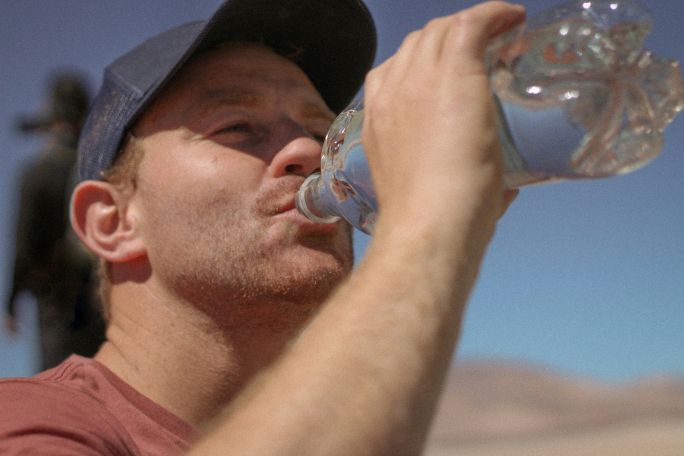
Drink the Same, Time it Differently
Since you should not drink less with an enlarged prostate, how can you manage your symptom burden? Ideally, you should take care about the timing of when you consume fluids. Aim to consume about 64 ounces of fluid in a day, increasing that total if you work out or go outside in warm, sunny weather. But try to avoid drinking anything in the two hours before bedtime, steering clear of food as well, especially fluid-rich dietary choices.
You should also be careful about the types of fluid you ingest. Reducing or eliminating caffeine and alcohol from your diet can help reduce your urgent trips to the bathroom, since both substances are irritants and can contribute to your frequent need to urinate.
Choosing Treatment Over Coping Mechanisms
Instead of planning your day around your drinking schedule and bathroom trips, you can choose to find lasting relief with PAE treatment. This minimally invasive procedure shrinks your prostate by blocking blood flow to the gland. Afterward, symptoms improve or disappear. And you can finally stop worrying about the need to drink less with an enlarged prostate.
Ready to find relief from an enlarged prostate? Want to avoid the cost, down time and side effects associated with surgery? We're here to help. Just [/ga-appt-link] reach out to our team [/ga-appt-link] at the Georgia Prostate Institute and request a consultation. When you come in to the office, we can explore your candidacy for this procedure.
Most men experience prostate enlargement, or BPH (benign prostatic hyperplasia) as they age. To date, we have still not uncovered the exact reason why this occurs. However, thanks to new evidence published in the journal Aging, we are starting to get a clearer picture of the causes of prostate enlargement.

Searching for Causes of Prostate Enlargement
About half of men aged 50 to 60 develop BPH symptoms, while, by the age of 80, almost 90% of men experience prostate enlargement. Given these statistics, we can tell that there's a link between aging and your risk for an enlarged prostate. And now, with this study, we can more narrowly identify key causes of prostate enlargement: inflammation, high blood pressure or cholesterol and/or obesity.
To reach these conclusions, the study followed 218 men, analyzing blood samples from 75 men without BPH and 144 men experiencing prostate enlargement. Here's what they found: the men with BPH showed more signs of oxidative stress, indicating chronic inflammation. They were also more likely to display signs of a metabolic disorder, defined as having obesity and/or high blood pressure or cholesterol. After making these findings, the authors stated, “There is mounting evidence that links the onset of inflammation with the development of prostate diseases, including benign prostatic hyperplasia and prostate cancer."
Prevention and Treatment
Given these findings, there is new hope that you can prevent or delay prostate enlargement through lifestyle measures. Specifically, managing your stress and weight; following a healthy diet; and getting regular exercise could help you reduce some of the causes of prostate enlargement.
Not sure where to start? First, you can check out this diet for enlarged prostate relief. Next, you can focus on relieving Lower Urinary Tract Symptoms (LUTS) such as nocturia and urgency by reducing the intake of irritants such as alcohol and caffeine and by eliminating your fluid intake at least two hours before going to bed.
Finally, if you want to find relief by shrinking your prostate gland, we encourage you to learn more about PAE treatment at the Georgia Prostate Institute. This minimally invasive procedure can offer lasting BPH symptom relief. And you can start to explore your candidacy for this treatment by [ga-apt-link] requesting a consultation [/ga-apt-link].
Having an enlarged prostate can lead to lower urinary tract symptoms (LUTS) because the expanded gland puts pressure on the bladder and urethra. One common symptom is nocturia, or the need to wake up to urinate several times in the night. But just how common is this issue? According to recent surveys, more than 80% of men 50 and older wake up to pee at night once a month or more. It's likely that these wakings are related to Benign Prostatic Hyperplasia (BPH), since that is the age at which many men experience non-cancerous gland enlargement. So, how can you address these enlarged prostate sleep problems, and stop BPH from keeping you up all night? Keep reading to find out.
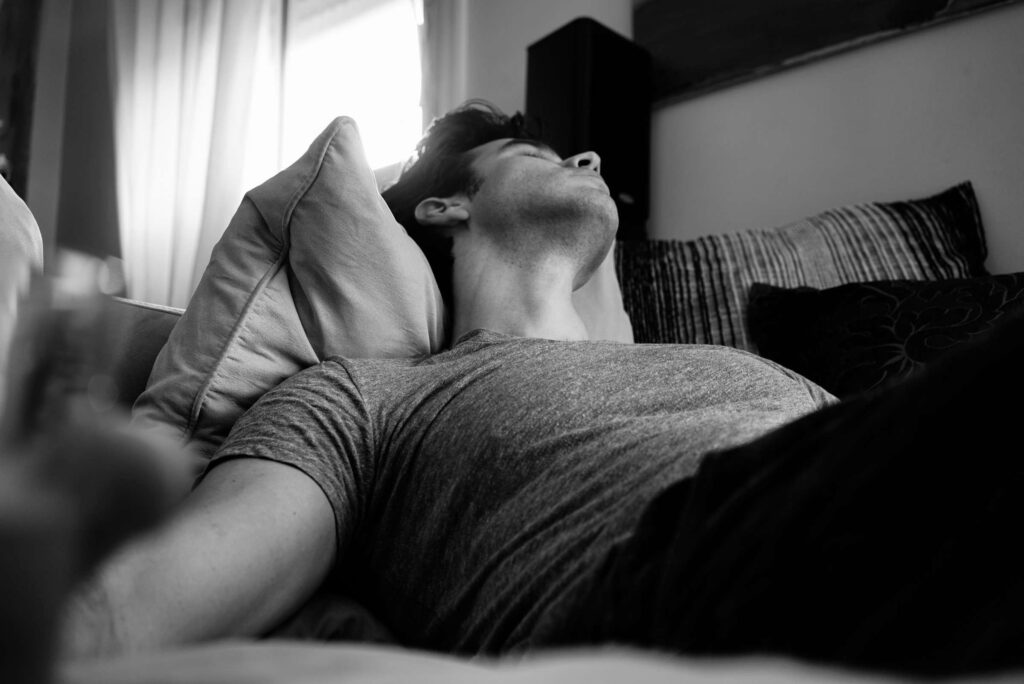
Understanding Enlarged Prostate Sleep Problems
BPH can lead to poor sleep quality, this study reveals. And that's because several BPH symptoms directly impact your ability to stay in bed, especially:
- Nocturia, the need to urinate several times during the night
- Urgency, or having to urinate suddenly, without warning
Of course, it's disruptive to your sleep when you're waking up all night to pee. But even when you are asleep, those interruptions can reduce the quality of the rest you are able to get. Plus, the impact of your enlarged prostate sleep problems can spread, as 64% of individuals who have a partner with BPH report their own sleep disruptions.
Aside from leaving you tired, sleep loss can have additional negative impacts. It's been linked to reduced function; memory loss; stress; depression; and diabetes. But you don't have to live with sleep disruptions forever. Instead, you can treat BPH to reduce your symptom burden and finally get the rest you've been missing.
Treating BPH
In order to address enlarged prostate sleep problems, you can start making lifestyle adjustments. Stop drinking completely at least two hours before going to bed. And limit your intake or alcohol and caffiebe all day, since these substances increase your need to urinate.
Medications including Cialis for BPH can relieve some of your symptoms. However, if you want to shrink your prostate while avoiding surgery, PAE treatment (or prostatic artery embolization) could be your best option. Unlike prostate surgery, this minimally invasive procedure can relieve prostate enlargement without the risk of sexual side effects. You can learn more about this treatment option by requesting a consultation at the Georgia Prostate Institute.
Your prostate is a small gland in the body, charged with producing semen. As you grow older, it tends to get larger. And, due to its location below your bladder, that enlargement can cause lower urinary tract symptoms and other signs of prostate problems. But how can you tell when to seek medical attention? Here’s what you need to know.
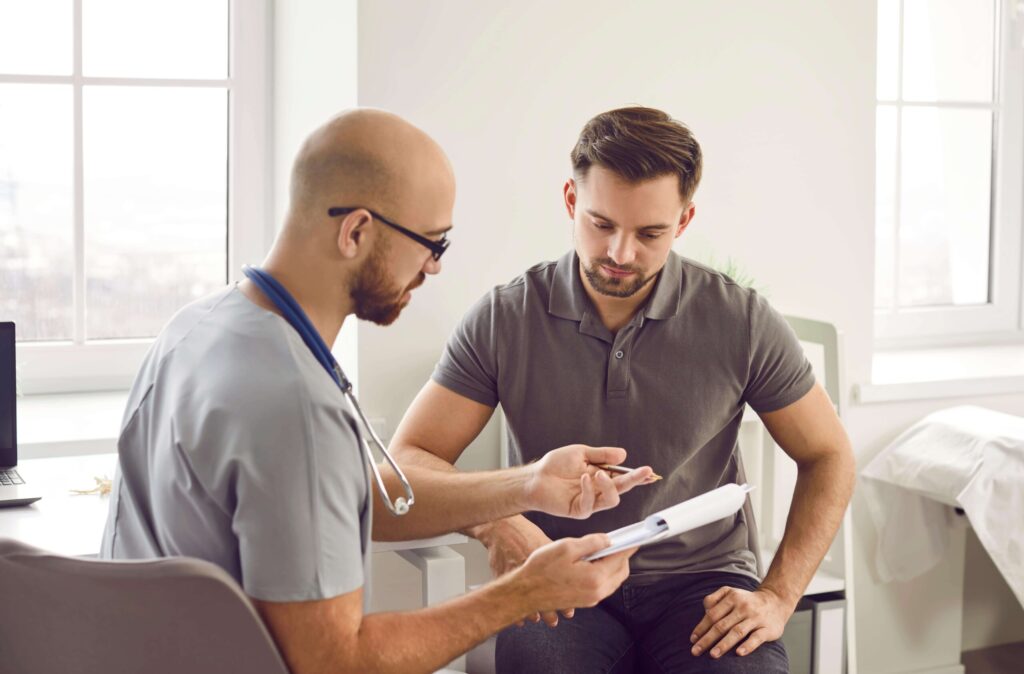
Common signs of prostate problems
Any of the following symptoms could indicate developing prostate problems:
- Frequent urge to urinate (called urgency)
- Nocturia, or the need to get up and urinate multiple times during the night
- Noticing blood in urine (hematuria)
- Pain or burning with urination
- Pain when ejaculating
- Experiencing pain or stiffness in your lower back, hips, pelvis, rectum or even the upper thighs
- Urinary flow that dribbles, is hard to initiate or hard to stop
If you’re experiencing any of these symptoms, it’s time to speak with your healthcare provider. They could be a sign that you’re experiencing one or more of the prostate problems highlighted below.
Prostate conditions: seeking diagnosis
Many of the symptoms listed above could be associated with more than one condition affecting the prostate. Potential concerns include:
- Benign prostatic hyperplasia, or BPH, a condition in which the gland becomes enlarged for reasons that aren’t cancer. Multiple, non-surgical treatments are available, including lifestyle changes, medications and PAE treatment in Georgia.
- Prostatitis, either acute or chronic, describing a bacterial infection that will usually require antibiotics to be resolved.
- Prostate cancer
Because these prostate problems all have some overlapping symptoms, its important to see your healthcare provider for an accurate diagnosis and treatment plan. With timely medical attention, you can receive a diagnosis of infection, or differentiate between BPH vs prostate cancer. Then, if BPH is the cause of your prostate problems, you can request a consultation with the Georgia Prostate Institute. When you come into our offices, we can review your candidacy for minimally invasive Prostate Artery Embolization, relieving your symptoms without the risks of surgery.
Symptoms such as urgent or frequent urination; waking in the night to urinate; or struggling to start or stop urinary flow could indicate benign prostatic hyperplasia (BPH). But how are doctors diagnosing BPH? Here's what you need to know.

Causes of an Enlarged Prostate
What is BPH? This is a condition in which prostate cells experience accelerated growth, leading to gland enlargement. Affecting approximately 50% of men over the age of 50, prostate enlargement can create on the urethra, triggering BPH symptoms that mostly affect the lower urinary tract. Now, this condition can develop in any individual with a prostate. But a new study just uncovered a a genetic link that increases BPH risk, helping clarify some of the underlying causes for this condition.
Diagnosing BPH
If you visit your doctor complaining of Lower Urinary Tract Symptoms (LUTS) such as the ones highlighted above, the healthcare provider should begin the process of diagnosing BPH or ruling out other conditions such as infections or prostate cancer.
The first step will likely be a digital rectal exam. Your doctor with insert a gloved finger into the rectum to feel for prostate enlargement or other abnormalities. Blood tests can check your prostate-specific antigen (PSA) levels, with results indicating the presence or lack of prostate enlargement. Additional diagnostics, including urine tests; ultrasounds; or a biopsy may be necessary to finalize a diagnosis, whether that means diagnosing BPH or determining a different cause of prostate enlargement.
Choosing Treatments for BPH
After diagnosing BPH, you can begin exploring treatment options. Some men may find symptom relief by improving their diets, managing their fluid intake, and removing triggers such as alcohol or caffeine. Medications may offer BPH relief, along with the added benefit of protection from Lewy body dementia , according to this study. However, for men who don't find sufficient symptom relief by choosing these treatment options, Prostatic Artery Embolization (PAE), may be a better way forward. This is a minimally-invasive interventional radiology procedure; it shrinks the prostate with fewer side effects than surgery. To learn more about PAE and see if you're a candidate for this procedure, simply request a consultation at the Georgia Prostate Institute.
Are you exploring Benign Prostatic Hyperplasia (BPH) treatment options, and researching prostatic artery embolization (PAE) and Transurethral Resection of the Prostate (TURP)? Each procedure can provide effective BPH relief, but also comes with unique considerations. Here's the critical information to consider when comparing PAE vs TURP.
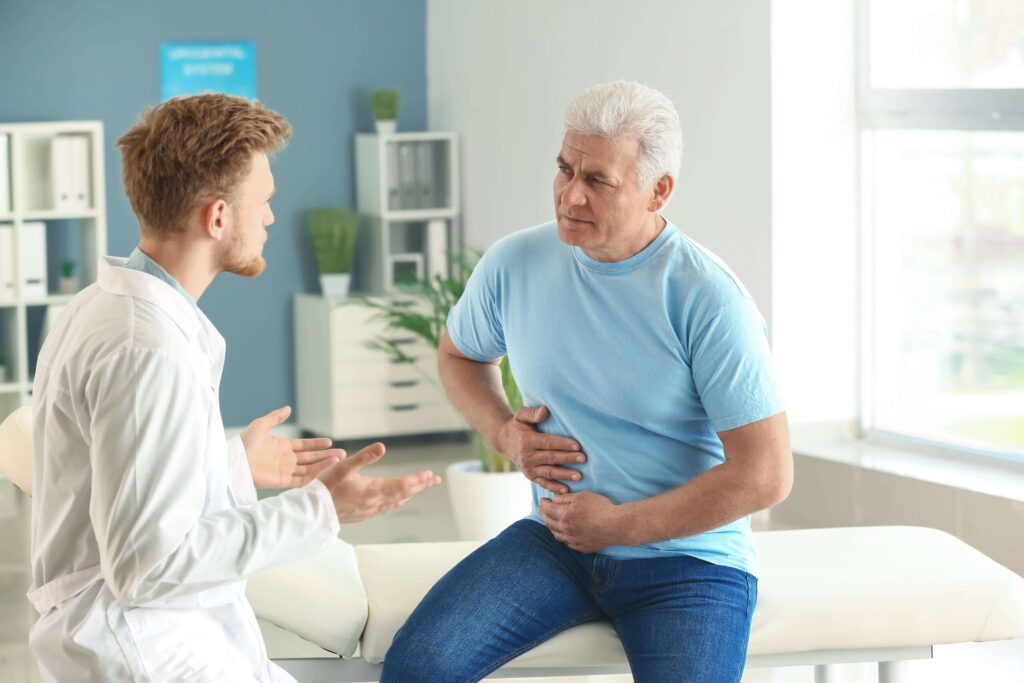
What's the Difference Between PAE vs TURP?
When you're suffering from BPH symptoms, you may be able to find relief with PAE and/or TURP, but different patients will be better suited for one medical procedure over the other. PAE treatment, available at the Georgia Prostate Institute, is a minimally invasive medical procedure that blocks blood supply to the prostate gland, causing it to shrink. It is an outpatient procedure performed without general anesthesia. TURP, however, is a surgical procedure that removes enlarged prostate tissue. It's performed using general anesthesia, typically neccessitating an overnight hospital stay.
Risks and Benefits
Since PAE a minimally invasive procedure, any associated side effects, including pelvic pain or pain with urination, are minimal and tempory. The recovery period is also shorter than after a surgical procedure, and, according to currently available data, PAE effectively relieves symptoms of BPH for at least six years.
In contrast, patients recovering from TURP will need to spend between one and three days in the hospital after surgery. Catheterization for at least 24 hours will also be necessary. TURP also comes with a greater risk for serious and longer-lasting side effects, including bleeding and retrograde ejaculation (in which semen flows back into the bladder instead of out through the urethra.)
Cost of PAE vs TURP
Both PAE and TURP should be covered by insurance, but some out of pocket expenses will still be likely. Typically, PAE is less expensive than TURP as it doesn't require overnight hospital stays or the cost of general anesthesia.
Choosing The Right Treatment for BPH
Before deciding between PAE vs TURP, consider:
- Your current age and health
- The severity of your BPH symptoms, along with the degree to which your prostate is enlarged
- Any existing or prior medical conditions that could impact your ability to withstand surgery
Do you need help choosing your best treatment option for an enlarged Prostate? To explore your Prostatic Artery Embolization candidacy, reach out to our interventional radiology team and request a consultation.
If you have benign prostatic hyperplasia (BPH) following a diet for enlarged prostate can help with symptom management. Of course, the only way to find lasting relief is to seek treatment that shrinks your prostate. But, if you're still researching treatment options, try making the following changes to your diet in order to improve your quality of life.

What's the Best Diet for Enlarged Prostate?
If you're experiencing BPH symptoms such as urinary frequency and difficulty with urinary flow, one of the best ways to relieve these lower urinary tract symptoms (LUTS) is with a medical procedure such as prostatic artery embolization procedure.
Including certain foods, while removing others, may help improve symptoms, especially those of urgency and night-time waking to urinate. Be sure to:
- Avoid high fat foods
- Eat more and many different vegetables
- Add lots of citrus and other fruits to your daily routine
- Incorporate more lean proteins like fish and poultry
Slowing Prostate Cancer Through Diet
In addition to playing a role in BPH management, new data published in the Journal of Clinical Oncology shows how diet can help after a prostate cancer diagnosis. UCLA Health Jonsson Comprehensive Cancer Center researchers learned that a low omega-6, high omega-3 fatty acid diet, combined with fish oil supplements, could slow the growth of cancer cells in men with early-stage prostate cancer.
Dr. William Aronson, the lead study author, said, “Many men are interested in lifestyle changes, including diet, to help manage their cancer and prevent the progression of their disease. Our findings suggest that something as simple as adjusting your diet could potentially slow cancer growth and extend the time before more aggressive interventions are needed." He concluded, “This is an important step toward understanding how diet can potentially influence prostate cancer outcomes.”
Manage BPH with Other Lifestyle Measures
Now we've seen how diet can impact prostate health, lets look at other lifestyle measures to support prostate health. Aside from following a diet for enlarged prostate, there are other little changes you can make to relieve some of your BPH symptoms. Make sure to lose weight if you're above a healthy number, and, regardless of your weight, try exercising at a moderate to vigorous level, most days of the week.
Next, cut back on caffeine and alcohol, since both increase the need to urinate. And avoid drinking anything within a few hours of bedtime to reduce middle of the night wakings. Finally, if you're looking for more lasting relief from BPH, Click here to request an appointment at the Georgia Prostate Institute. Together, we'll discover if you are a candidate for PAE!






